Africa is a continent that is rich in history and culture. While most people are familiar with ancient Egyptian and African civilizations, many more kingdoms and empires have played a significant role in the continent’s history.
This article will discuss eight African kingdoms and empires that you probably never heard of but were influential in shaping the country.
African Kingdoms: There’s More to Africa Than Egypt
Africa is a vast and mysterious continent, home to several kingdoms and empires that are lesser known than those in other parts of the world. Most people think of ancient Egypt when discussing the idea of African kingdoms.
Yet, many more empires have shaped the continent into what it is today. Unfortunately, many history books have omitted the contributions of these empires. We must discuss and bring their legacies to light. Some may consider it a responsibility.
These influential kingdoms are in no order, as each has played an important role. As the place where the Cradle of Humankind exists, many would argue that Africa is the birthplace of humanity itself.
Consider that many African societies existed here, and humanity spread across the globe from this epicenter, leaving traces of civilization all over the world, from the Americas to Eurasia.
Throughout history, these kingdoms were political and economic powerhouses. Let’s explore eight fascinating African empires and learn about their history and culture.
The Aksumite Empire
The Kingdom of Aksum, which ruled parts of what is now Eritrea and northern Ethiopia during the Roman Empire’s rise and fall, was one of the most powerful kingdoms in ancient Africa. Yet surprisingly, little is known about Aksum’s beginnings, although it had evolved into a trading colossus with gold and ivory, allowing it to connect European and Asian interests.
In addition, the Kingdom of Aksum is the oldest African kingdom on our list. This kingdom flourished in an area where evidence of agriculture dates back 10,000 years.
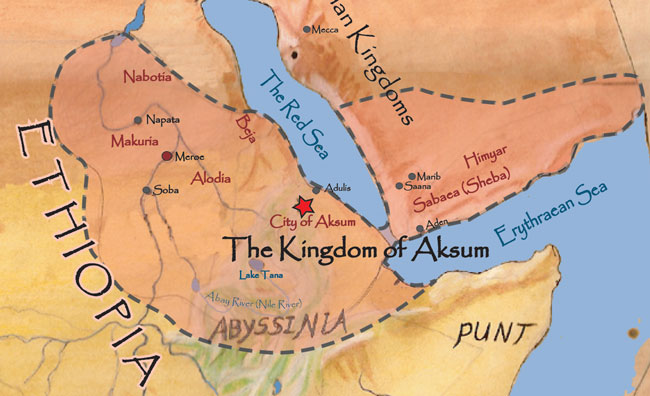
The Aksumites were a powerful kingdom. They erected several stone wooden slabs as monuments in pre-Christian times, also known as Stelae, but one is particularly famous. The Obelisk of Aksum, located in Ethiopia’s historic capital city of Aksum, is around 1700 years old and measures 79 feet tall.
The kingdom established a written script known as Ge’ez—one of the first to be developed in Africa. Aksum also became one of the first empires in the world to embrace Christianity in the fourth century, spawning a political and military connection with the Byzantines.
The Roman Empire fell into decay sometime between the 7th and 8th centuries, but its religious legacy continues to thrive through the Ethiopian Orthodox Church.
The Ghana Empire
This African kingdom, better known as Wagadou, was a key point on the trans-Saharan trade route that linked African civilizations to markets along the Mediterranean Sea and the gold trade. As a result, the empire was arguably Africa’s first powerful civilization.
The Kingdom of Ghana was a large, wealthy city that grew to 15,000 to 20,000 people. Gold, ivory, and salt were the kingdom’s main exports. In addition, the kingdom specialized in the gold and kola nut trade. They had an advanced taxation system and sophisticated administration procedures.
After centuries of growth, the Kingdom of Wagadou came under Berber assaults in the north, which led to its downfall. The kingdom eventually broke down into several smaller states. Finally, around 1240 CE, Ghana was no more and became a part of Mali.
The Mali Empire
The Mali Empire was formed in the 1200s when a ruler named Sundiata Keita fought against a Sosso king and welded his people into a new state. Under Keita and his successors, the Mali Empire tightened its grip on a significant section of West Africa and amassed wealth in trade.
The Mali Empire collapsed in the 16th century. Despite this, it was one of Africa’s prized gems and renowned for its luxury and comfort at its height. While the Ghana Empire traded in gold, the Malian Empire mined gold and supplied roughly 50% of the world’s supply by the end of the 1200s.
The kingdom’s riches are so great that one famous tall tales of King Mansa Musa, who stopped by Egypt during a 14th-century hajj to Mecca. According to contemporary sources, Musa doled out so much gold during his visit that its value fell dramatically in Egyptian marketplaces for many years. After performing the hajj, Musa ruled from 1312-1332.
The Kingdom of Kush
The Kingdom of Kush was a major African power for over a thousand years. The Nubian ascendancy ruled over much of what is now Sudan and Egypt.
Almost everything we know about Kush comes from Egyptian texts, which claim that it was a commercial hub with an essential market in ivory, incense, iron, and, most importantly, gold.
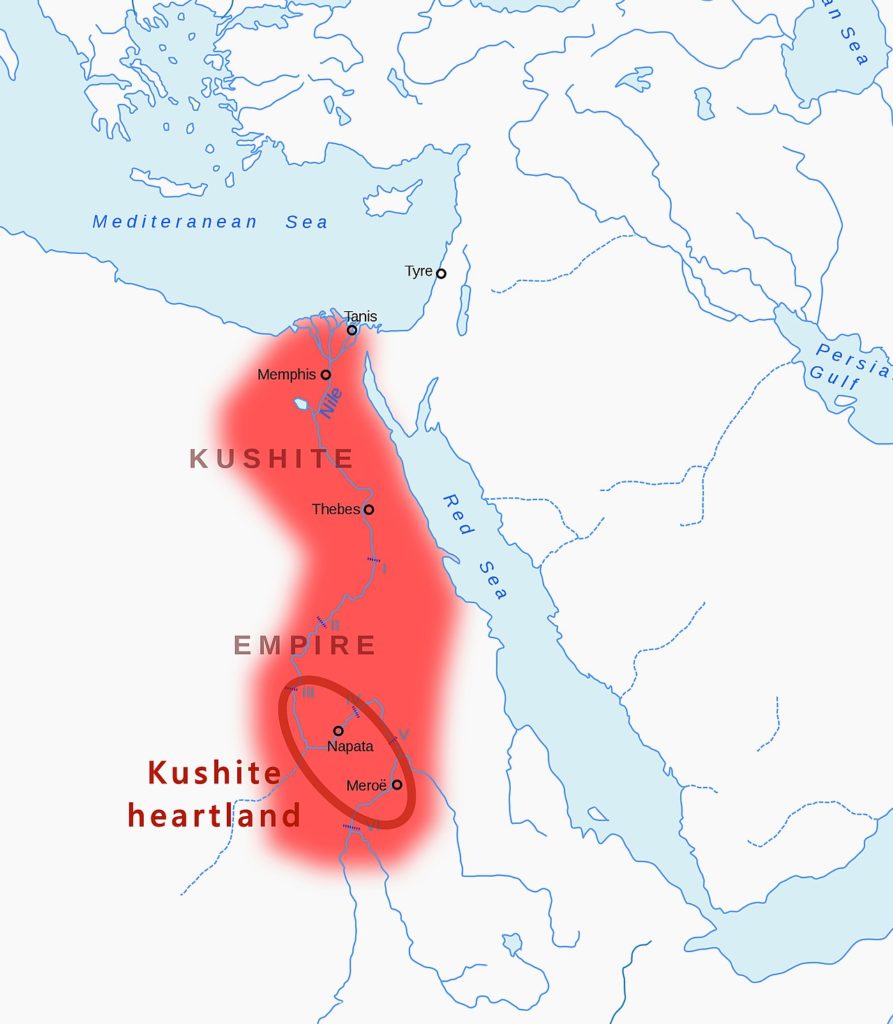
The Kushites, who originated in what is now Egypt, were nomadic people who lived in tents and subsisted on cattle herding.
They adopted many Egyptian customs and engaged in trade with Egypt before its conquest by the Egyptians. The Kushites revered ancient Egyptian gods, mummified their dead, and constructed their own pyramids. The remains of more than 200 pyramids can still be found near the ancient Kushite capital of Meroe today.
The Songhai Empire
Very few empires in African history can compare to the Songhai Empire because of its size. Formed in the 15th century from some of the territories of the Mali Empire, this kingdom comprised parts of a dozen modern-day nations.
However, the Songhai Empire is best known for its capital city Timbuktu, one of the region’s most excellent learning centers. Academics and skilled workers from Africa, the Middle East, and Spain flocked here to learn and work.
The Songhai Empire, in its heyday, presided over the transportation of gold, slaves, and textiles across northern Africa.
The empire prospered due to favorable trade regulations and a sophisticated bureaucratic framework that organized its vast domains into different provinces ruled by individual governors.
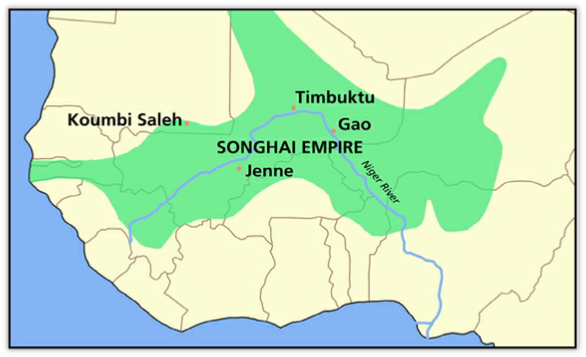
In addition, the Songhai Empire had a role in the slave trade in Africa and with European nations. Slaves were sold as indentured laborers, but many maintain that the slavery Africans experienced was significantly different from that Americans would endure.
The city peaked in the early 16th century under King Muhammad I Askia, who expanded the kingdom and forged an alliance with Egypt’s Muslim Caliph. However, while the Songhai Empire was once one of the world’s most powerful states, it fell to the Moroccan invasion in the late 1500s due to internal conflict and civil war.
The Kingdom of Zimbabwe
Great Zimbabwe is one of the most stunning monuments in sub-Saharan Africa, with a colossal fortification made of stacked stones, stone towers, and defensive walls constructed from cut granite blocks. The rock citadel has long been the subject of tales and legends.
Still, historians recognize it as the capital city of an indigenous empire that flourished in southern Africa between the 13th and 15th centuries. This kingdom dominated modern-day Botswana, Zimbabwe, and Mozambique.
It was wealthy in cattle and precious metals and straddled a trade route that linked the region’s gold fields with ports on the Indian Ocean coast.
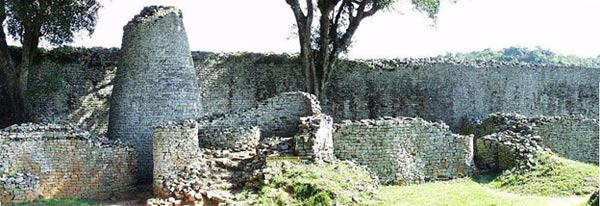
Despite its obscurity, archaeological remains have been discovered, including Chinese ceramics, Arabian glass, and European textiles, suggesting that it was once a well-connected commercial center. In addition, the Kingdom of Zimbabwe developed a stunning level of artistic and stonework craftsmanship.
The city of Great Zimbabwe mysteriously vanished sometime during the 15th century, following the kingdom’s decline. Still, it was home to around 20,000 people in its prime. You may still visit the ruins of meticulously built structures today.
Carthage
At its peak, Carthage was a 9th-century BCE Berber and Phoenician city-state that dominated much of Tunisia. It was one of the world’s largest and most powerful empires. Carthage was a major trading center in North Africa for over 500 years; it evolved into a vast maritime empire that dominated the Mediterranean Sea’s textiles, gold, silver, and copper trade.
Its capital had around 450,000 people and was encircled by a moat with 220 docking bays for vessels. Carthage’s influence eventually spread from North Africa to Spain and parts of the Mediterranean, but its appetite for growth exacerbated tensions with the aspiring Roman Republic.
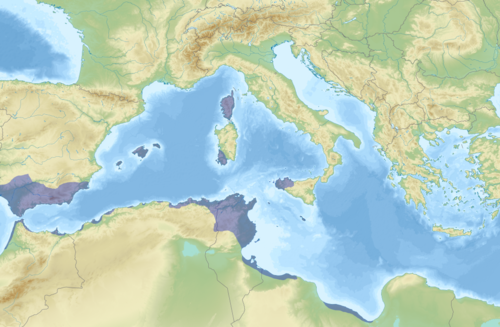
As a result, this North African trading center was one of Rome’s rivals in the Punic Wars.
Beginning in 264 B.C., the ancient superpowers clashed in the three bloody Punic Wars, the last of which ended in 146 B.C. with the near-total destruction of Carthage. Today, almost all that remains of the once-mighty empire is a series of ruins in the city of Tunis.
The Kingdom of Mutapa
The Mutapa Empire spanned a massive swathe of Southern Africa. Its realm was so vast that it would cover parts of six Southern African countries today if it still existed. A warrior king from Zimbabwe’s Kingdom allegedly founded the Kingdom of Mutapa.
Mutapa eclipsed Great Zimbabwe and its environs in a single generation. In their efforts to dominate trade throughout the region, the Portuguese became intermediaries between India and Mutapa’s smaller kingdoms. King Solomon’s biblical mines were said to be controlled by Mutapa’s ruler, fueling this interest.
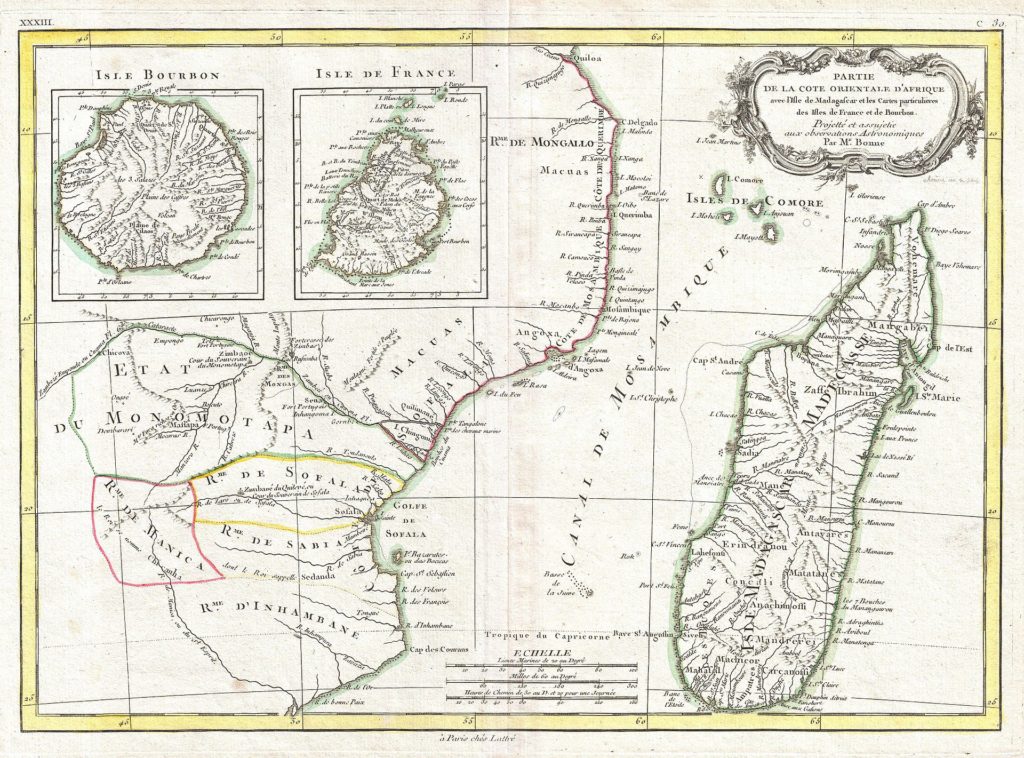
The Kingdom of Mutapa dominated this region for over a century, levying a 50% tax on all imported commercial items. However, the kingdom’s fall began in the late 16th century, allowing the Portuguese to transform Mutapa into a tributary state.
Western Civilizations and Their Influence on Africa
While we’ve only touched on several of the most well-known ancient African civilizations, many others have shaped the continent’s history. Together these ancient civilizations have left an indelible mark on Africa, influencing everything from art and culture to religion and politics. In addition, these civilizations usually built breathtaking structures, had powerful empires, and left behind a significant legacy.
We also realize that some of these ancient civilizations adapted to the outside world differently, especially when the Europeans first landed on the continent’s western coast.
Africans were taken to Europe via the Arab trade routes and Portugal, followed by the Dutch, British, and others. Despite searching for gold and other rare trading items, Europeans soon began operating the slave trade, which involved exporting captured Africans.
A large amount of our understanding about early Africans stems from slave traders’ interactions with people from the west and central Africa who began capturing other individuals to sell to Europeans.
During this time, some west African tribes evolved harsh methods to prey on weaker societies to gather slaves for sale to Europeans. However, when more white Europeans traveled to Africa as missionaries and explorers in the mid-nineteenth century, these civilizations’ customs became known outside of Africa.
Between the seventeenth and nineteenth centuries, Europe colonized most of Africa. They split the whole continent into colonies for Britain, Germany, Portugal, Italy, Belgium, France, and Spain.
These colonies divided existing African communities and established political authorities to manage the settlements.
Europeans also built railways across the continent, rapidly supplanting traditional trading routes. Colonists forced Native Africans to work in European plantations and mines due to this change in their trading patterns.
Europeans perceived colonization to “civilize” people from Africa. New cultures were formed when traditional African traditions blended with European customs in the colonies.
Despite fierce resistance, Africans were forced to conform to colonial rule. Only Ethiopia and Liberia remained sovereign states through 1914.
Many African countries sought independence in the 1950s. Africans fought against colonial domination and won their freedom in quick or lengthy, bloody conflicts.
By 1960, the majority of African colonies had gained their liberty. These newly formed nation-states freed from European control began establishing new African-controlled nations.
A variety of customs and traditions, however, were maintained. For example, the clothing worn in these freed African states combines traditional African styles and patterns with European fashions.
African History is often Overlooked
The African continent has a long and varied history that is often overlooked in the Western world. These ancient African civilizations have left a significant mark on the continent, influencing everything from art and culture to religion and politics.
These civilizations usually built important structures, had powerful empires, and left behind a significant legacy. Africans had to adapt to the outside world differently, especially when the Europeans first landed on the continent’s western coast.
Through unwarranted influence, Africa has become a continent with a diverse range of people and customs. Yet, despite all the changes, some traditions have remained the same since ancient times. Africans are proud of their history and are working to keep their heritage alive in the modern world.

